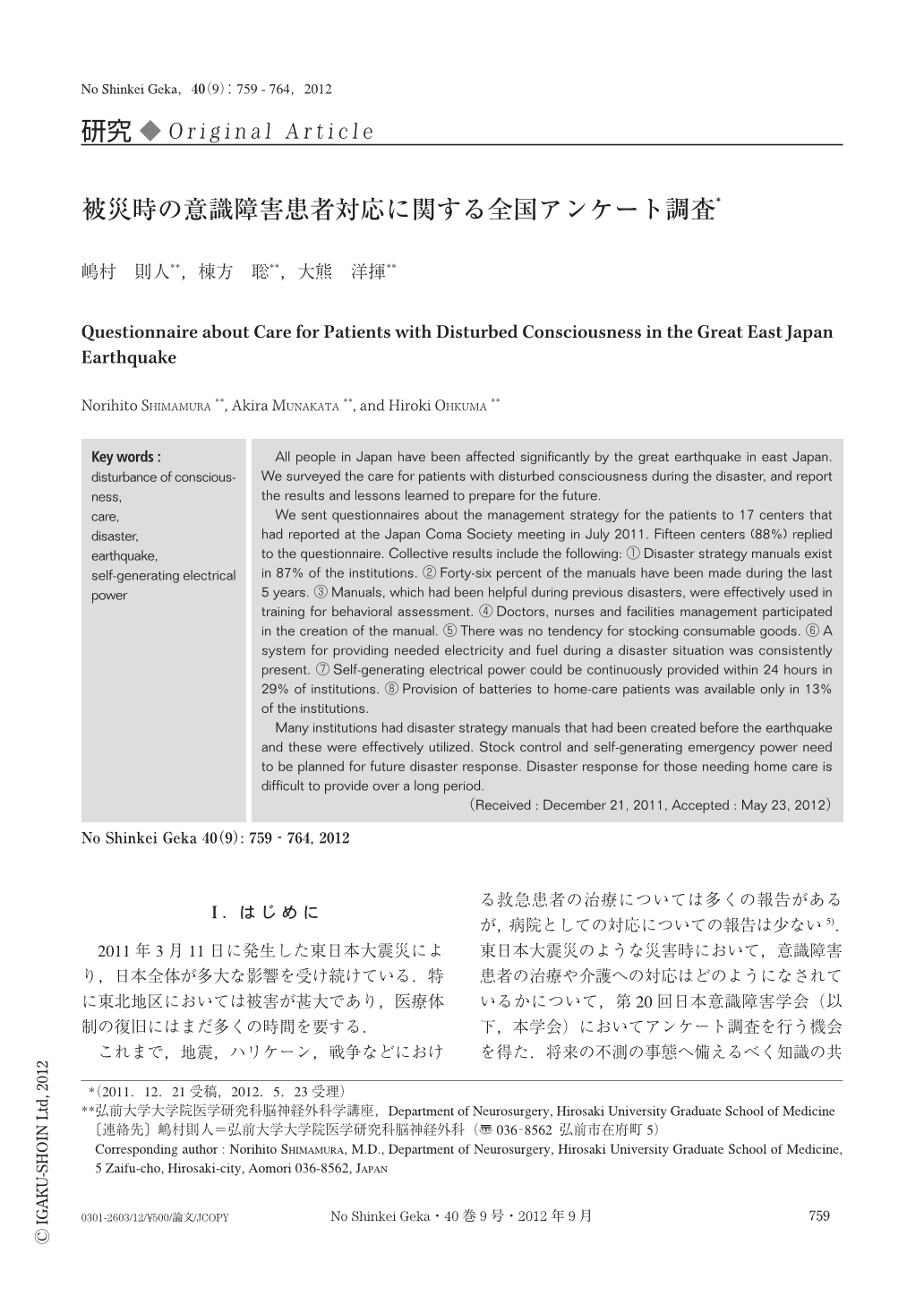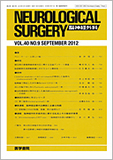Japanese
English
- 有料閲覧
- Abstract 文献概要
- 1ページ目 Look Inside
- 参考文献 Reference
Ⅰ.はじめに
2011年3月11日に発生した東日本大震災により,日本全体が多大な影響を受け続けている.特に東北地区においては被害が甚大であり,医療体制の復旧にはまだ多くの時間を要する.
これまで,地震,ハリケーン,戦争などにおける救急患者の治療については多くの報告があるが,病院としての対応についての報告は少ない5).東日本大震災のような災害時において,意識障害患者の治療や介護への対応はどのようになされているかについて,第20回日本意識障害学会(以下,本学会)においてアンケート調査を行う機会を得た.将来の不測の事態へ備えるべく知識の共有を行うために,アンケートの詳細を報告する.
All people in Japan have been affected significantly by the great earthquake in east Japan. We surveyed the care for patients with disturbed consciousness during the disaster, and report the results and lessons learned to prepare for the future.
We sent questionnaires about the management strategy for the patients to 17 centers that had reported at the Japan Coma Society meeting in July 2011. Fifteen centers (88%) replied to the questionnaire. Collective results include the following: ①Disaster strategy manuals exist in 87% of the institutions. ②Forty-six percent of the manuals have been made during the last 5 years. ③Manuals, which had been helpful during previous disasters, were effectively used in training for behavioral assessment. ④Doctors, nurses and facilities management participated in the creation of the manual. ⑤There was no tendency for stocking consumable goods. ⑥A system for providing needed electricity and fuel during a disaster situation was consistently present. ⑦Self-generating electrical power could be continuously provided within 24 hours in 29% of institutions. ⑧Provision of batteries to home-care patients was available only in 13% of the institutions.
Many institutions had disaster strategy manuals that had been created before the earthquake and these were effectively utilized. Stock control and self-generating emergency power need to be planned for future disaster response. Disaster response for those needing home care is difficult to provide over a long period.

Copyright © 2012, Igaku-Shoin Ltd. All rights reserved.


